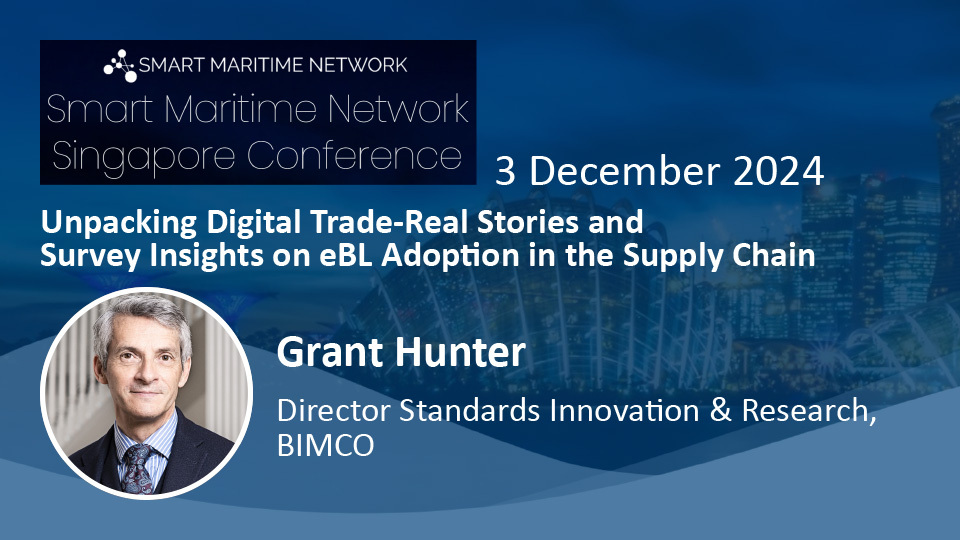-
BIMCO supports IMO development of global remote inspection guidelines
During the COVID-19 pandemic, the shipping industry has faced challenges when it comes to conducting surveys and inspections physically on board ships. As a result of social distancing requirements during the pandemic, remote surveys and inspections for the certification of materials and components have been successfully used and have proven to be a helpful alternative to on-site surveys. Now, global guidelines are needed.
-
BIMCO and CIRM software log is now ISO standard 24060
BIMCO and CIRM (Comité International Radio-Maritime) have taken the concept of the onboard software log to the International Organization for Standardization (ISO) to automate and modernise it. As a result, the ISO has published a new standard on a ship software logging system to be used for operational technology onboard ships.
Maritime digitalisation
These days there is a strong focus on the development of new shipping technologies and especially the use of digital opportunities.
There seem to be three key drivers for going digital. First is the competitive pressure for cost efficiency. This is often combined with the second driver, which is environmental factors and regulatory compliance requirements. The fact is (and this is the third key driver) that stakeholders in the shipping value chain are increasingly requiring digital operations from their business partners. How these elements are combined into a business case may vary among ship type, trade patterns and operating or trading region.
BIMCO focuses on two segments of maritime digitalisation: ship-to-shore interfaces and autonomous ships.
-
Mate’s Receipt
The BIMCO Standard Mate’s Receipt is available free of charge in English and six additional dual-language versions: English/Arabic, English/Chinese, English/Japanese, English/Korean, English/Portuguese and English/Spanish.
-
e-Bills of Lading
BIMCO has developed and published an electronic bill of lading standard (eBL Standard) for the bulk shipping sector. Our goal is to help accelerate the digitalisation process by establishing common industry standards for electronic bills of lading. The eBL Standard is a structured dataset consisting of 20 predefined data fields that are common to bulk shipping bills of lading.
-
Are autonomous ships on the horizon?
Millions of dollars are invested into the research and trials of systems needed to expand autonomous shipping. The question is: will it pay off?
-
Ship-shore interface
An efficient, safe, and environmentally sustainable port call depends on clear communication before, during and after operations are carried out.
-
Autonomous ships
In recent years, the prospect of autonomous ships has become a hot topic for commercial shipping. The same fast-paced advances in technology that have led to projects to automate vehicles in every other sector of the transportation industry have also found their way to the shipping industry. Advances in camera technology, sensors, electromechanical actuators, and satellite technology appear to promise a world in which ships will traverse the oceans without a human on board.
Latest related news
Elsewhere on BIMCO
Shipping KPI System
The BIMCO Shipping KPI System is a global shipping industry tool for defining, measuring and reporting information on operational performance and is used by shipping companies to:
- compare their business performance against the industry standard and identify where efficiency improvements could be made
- clearly communicate their ship operational performance, both internally and externally.



